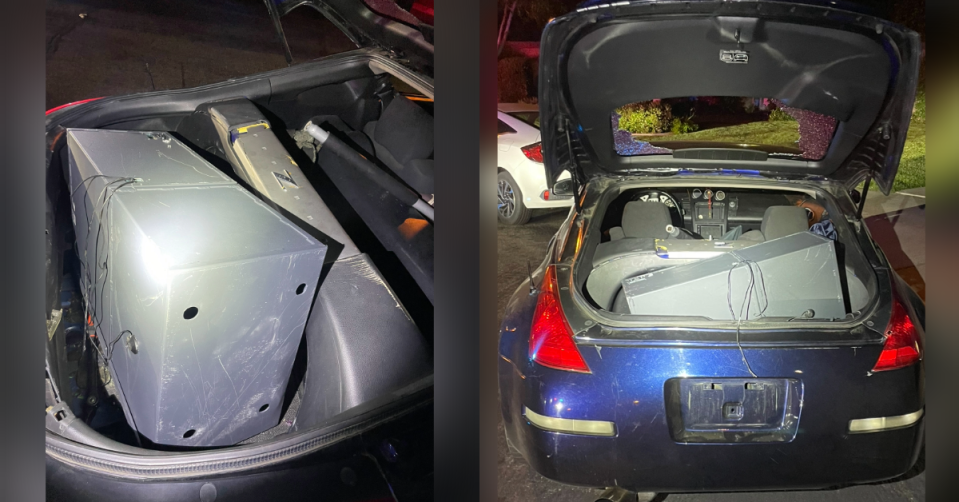STORY: ‘’It’s an incredibly complex and challenging conundrum for ship owners.’’
The shipping industry is under increasing pressure to decarbonize.
Especially now that the International Maritime Organization, the IMO, is being pushed to implement a charge on the sector’s greenhouse gas emissions – potentially as soon as September 2024, with the goal of reaching net zero by 2050.
But getting there is complicated, say shipping executives.
They cite unclear regulatory guidelines, particularly around which cleaner fuels to switch to.
Kenny MacLean is Chief operating officer of Peninsula which supplies fuel to the shipping industry.
‘’We obviously empathize with the complexity and the variety of regulatory regimes are placing upon what are essentially our customers, and also us to an extent as well because we operate ships. I think the big issue about the new fuels regulatory guidelines is that they there are a lot of them and that they all, to an extent, overlap. But most importantly, I think as they come from different either national, regional or international bodies.
Shipping accounts for roughly 90% of world trade and is responsible for nearly 3% of the world’s carbon dioxide emissions.
Currently, most large ships run on very low-sulfur fuel oil, a tar-like substance that is relatively inexpensive and energy dense so a fairly small amount is needed to propel a vessel for great distances.
Other greener alternatives include ammonia, methanol or biofuel.
But industry research has shown that they each have their unfavorable characteristics – ranging from dangerous and toxic to expensive or in limited supply.
“Shipping is split into two key categories liner and tramp. So liners, you know, things like cruises, ferries, container lines. They pretty much know where they’re going to be when they’re going to be there. If you’re in the tramp business, it’s a spot business, so your ship could literally be deployed anywhere in the world. So if you have more certainty over where your ship’s going to be deployed, you equally have more certainty over the fuel propulsion system that you can choose because you know what is available today or what is likely to be available in the future. If you’re in the tramp trade, however, you’re going to need as much flexibility as possible. So that’s why we’re looking at hybrid propulsion systems. It could be traditional fuels coupled with something like LNG.’’
LNG, which stands for liquefied natural gas, powered this 8,000-passenger Royal Caribbean cruise ship on its maiden voyage in early 2024.
The company says the cleaner burning fuel makes the vessel 24% more efficient when it comes to carbon emissions than required by the IMO.
But environmental groups say the accompanying methane leakage from the ship’s engines is an unacceptable risk to the climate.
Bryan Comer, Director of the Marine Program at the International Council of Clean Transportation
‘’LNG isn’t a short-term or long-term solution, because the moment that you start using LNG as a marine fuel, including in cruise ships, you actually start to emit more greenhouse gas emissions than if you had done nothing and continued to run on the fuels that we’re using today. ‘’It’s actually a step in the wrong direction.”
Last year, European Commission President, Ursula von der Leyen, named the world’s first methanol-fueled container vessel at a ceremony in Copenhagen.
“This event is a big deal, not only for Europe but for the whole world. By successfully decarbonising shipping, we’re not only promoting our fight against climate change, we’re also creating new supply chains, new industries and thousands of new good jobs.”
Experts say the challenge for ship owners is not just to do with choosing the right cleaner fuel, it’s about its availability too.
Roger Holm is Marine president at Wärtsilä – a Finnish company which provides equipment to the maritime industry.
‘’Here you have the chicken and egg problem, with these fuels that companies are not ready to invest [in] when they don’t know exactly the financial impact. They don’t know when the fuels will be available. And this means that if you want to build up now green fuel production as a fuel provider, you are not ready to invest because no one will sign offtake agreements for you.’’
Most vessel engines are designed to take one type of fuel, and have an average 25-year lifespan.
So given the lack of a longer-term regulatory framework, many in the industry are reluctant to purchase entire new fleets or retrofit current engines in order to run cleaner fuels.
The IMO’s draft plans to implement a fuel standard and emissions prices are still open for discussion… but the pressure is on to chart a course, which could be adopted or amended at the group’s next meeting in September.
Signup bonus from



